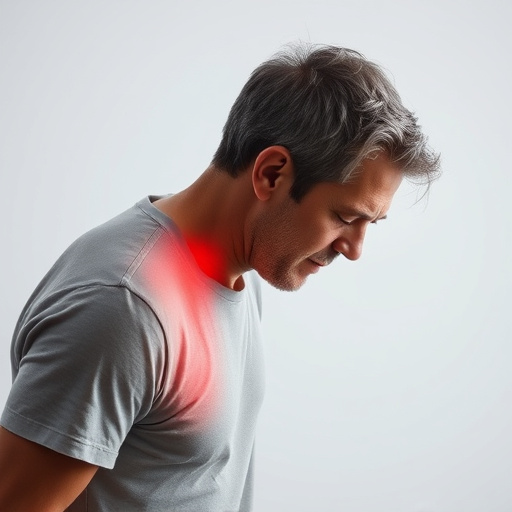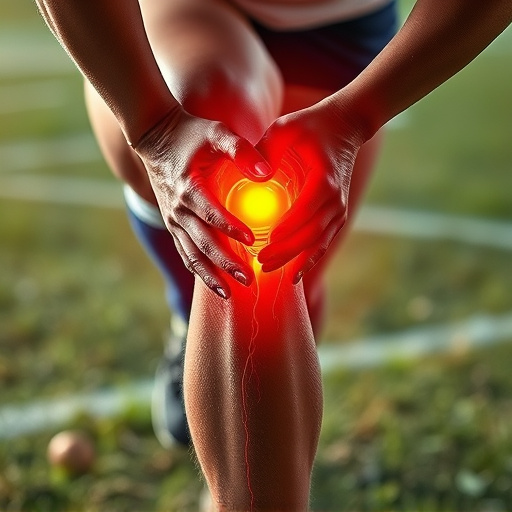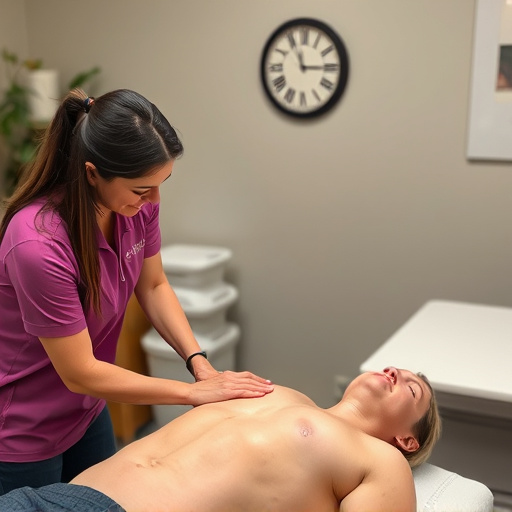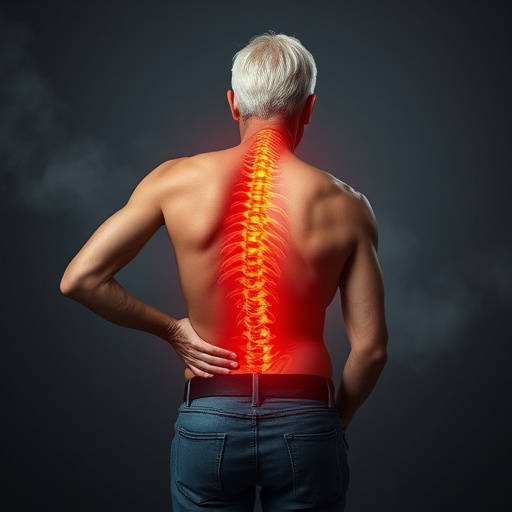Shockwave therapy, using high-energy acoustic waves, revolutionizes sports injury treatment by stimulating tissue repair and natural healing for conditions like muscle strains, tendonitis, and herniated discs. This non-invasive approach offers faster recovery than traditional methods, providing athletes with targeted pain relief and enhanced wellness for optimal performance. As a game-changer in sports medicine, shockwave therapy is increasingly adopted for its effective, low-risk treatment of tendinopathy, muscle strains, and chronic neck pain, promising to become a cornerstone of modern athletic care.
In the realm of sports medicine, shockwave therapy is emerging as a game-changer for healing athletes’ injuries. This non-invasive treatment uses focused sound waves to stimulate tissue repair, offering a promising alternative to traditional methods. The science behind its efficacy has intrigued professionals, leading to its integration into practices worldwide. From understanding the process to exploring its impact on recovery times, this article delves into how shockwave therapy is revolutionizing sports injury care, providing athletes with faster and more effective healing solutions.
- Understanding Shockwave Therapy for Athletes
- The Science Behind Its Efficacy in Injury Healing
- Integrating Shockwave into Sports Medicine Practices
Understanding Shockwave Therapy for Athletes

Shockwave therapy has emerged as a groundbreaking approach to managing and healing shockwave sports injuries among athletes. This non-invasive treatment utilizes high-energy acoustic waves, known as shockwaves, to stimulate tissue repair and promote natural healing processes within the body. By targeting specific areas affected by injuries like muscle strains, tendonitis, or even herniated discs, shockwave therapy offers a promising solution for chronic pain relief in athletes.
The process involves delivering controlled shockwaves to the injured site, which helps break down scar tissue and stimulate blood flow. This enhanced circulation facilitates the delivery of essential nutrients and oxygen to promote tissue regeneration. Additionally, shockwave therapy can be an effective alternative or adjunct to traditional treatments, such as physical therapy or prescription medications, providing athletes with a faster route to recovery and potentially offering headache relief from persistent pain.
The Science Behind Its Efficacy in Injury Healing

The science behind shockwave sports injuries therapy is rooted in a fascinating mechanism that leverages acoustic energy to stimulate healing processes within the body. Shockwaves, generated either mechanically or electromagnetically, create microscopic bubbles that expand and contract within tissues, leading to neoangiogenesis (the formation of new blood vessels) and enhanced cellular proliferation. This process accelerates the natural repair mechanisms, fostering faster tissue regeneration and reducing inflammation.
For athletes suffering from conditions like chronic neck pain, which is a common result of repetitive motion or acute injuries in sports, shockwave therapy offers a non-invasive alternative to surgical intervention or lengthy recovery periods associated with traditional chiropractic treatment. By targeting specific areas of discomfort, shockwave therapy can provide targeted relief, leading to improved mobility and reduced pain symptoms. This innovative approach aligns perfectly with holistic wellness care, focusing on natural solutions for optimal athletic performance and overall well-being.
Integrating Shockwave into Sports Medicine Practices

In recent years, shockwave sports injuries therapy has emerged as a game-changer in the realm of sports medicine. This innovative approach leverages low-energy sound waves to stimulate healing and promote tissue regeneration, making it an effective treatment for various athletic ailments. Integrating shockwave into sports injury practices offers a non-invasive alternative to traditional methods, which often involve medications or surgeries. It’s particularly beneficial for conditions like tendinopathy, muscle strains, and even chronic neck pain treatment, providing athletes with a faster and more sustainable path to recovery.
Sports professionals are increasingly adopting this technology due to its ability to offer targeted back pain relief without the risks associated with invasive procedures. Shockwave therapy has been shown to enhance the body’s natural healing processes, making it an appealing option for both professional athletes and those participating in recreational sports. As research continues to uncover its potential, shockwave sports injuries treatment is poised to become a cornerstone of modern sports medicine practices, helping athletes return to their active lifestyles faster and safer.
Shockwave therapy for sports injuries is emerging as a powerful tool in the field of sports medicine. By understanding the science behind its efficacy and integrating this technology into practices, athletic trainers and healthcare professionals can enhance healing outcomes for athletes. As research continues to grow, shockwave treatment promises to revolutionize recovery processes, offering a promising path forward for active individuals dealing with sporting injuries.














